Abstract
Galactorrhea-amenorrhea syndrome and infertility are manifestations of elevated prolactin levels. Numerous functional and tumorous conditions can cause hyperprolactinemia; prolactinoma is the most common tumor. The dopamine agonist agent bromocriptine controls hypersecretion, shrinks prolactinomas, and will restore menstruation and alleviate galactorrhea in most patients.
Full text
PDF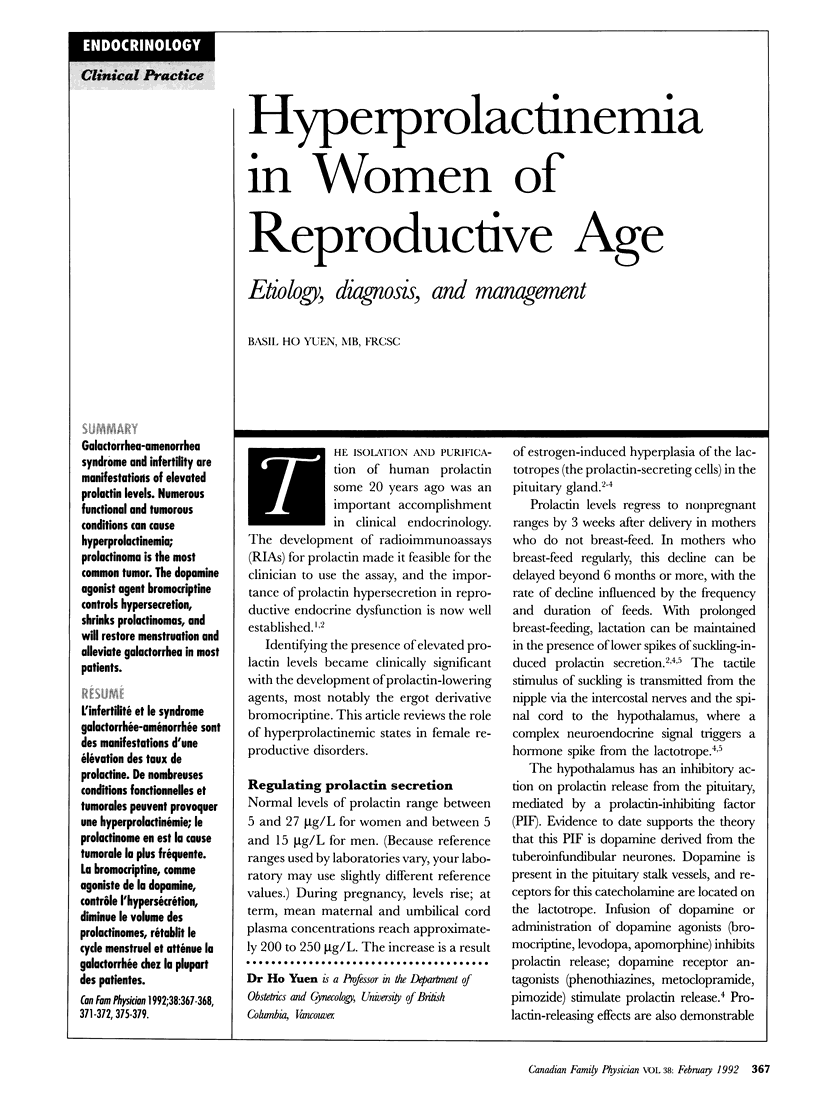
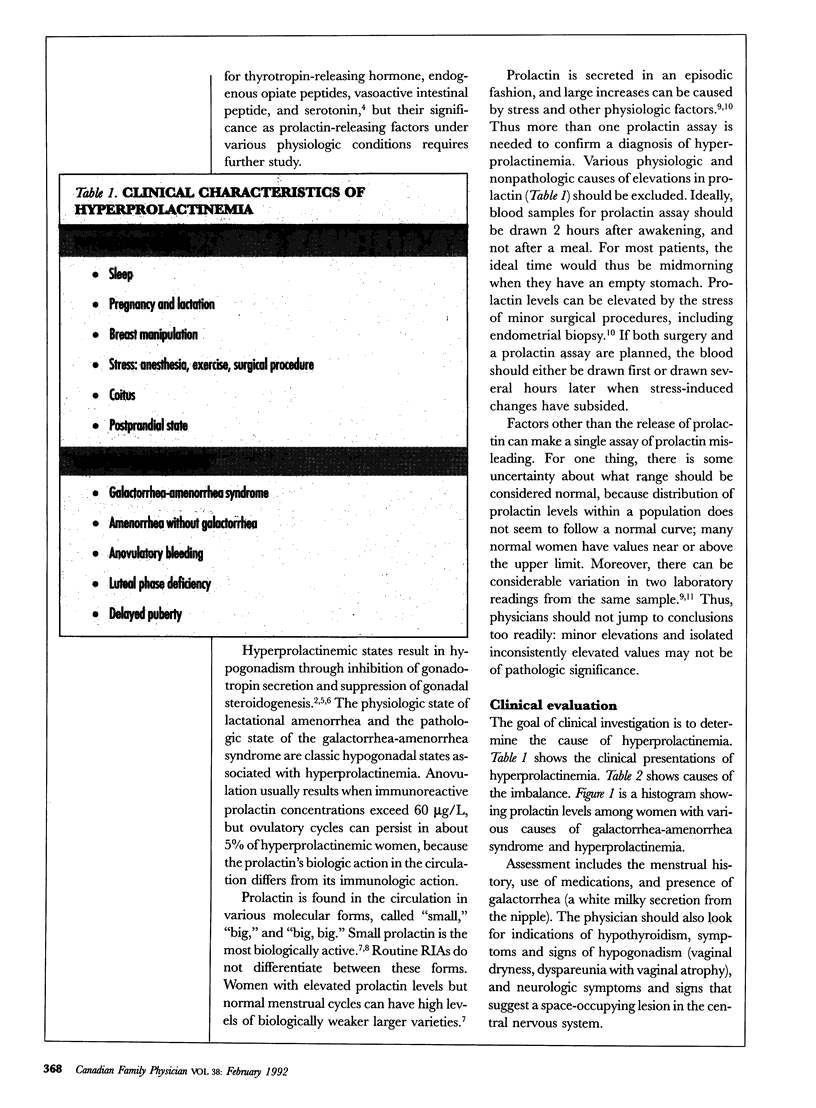
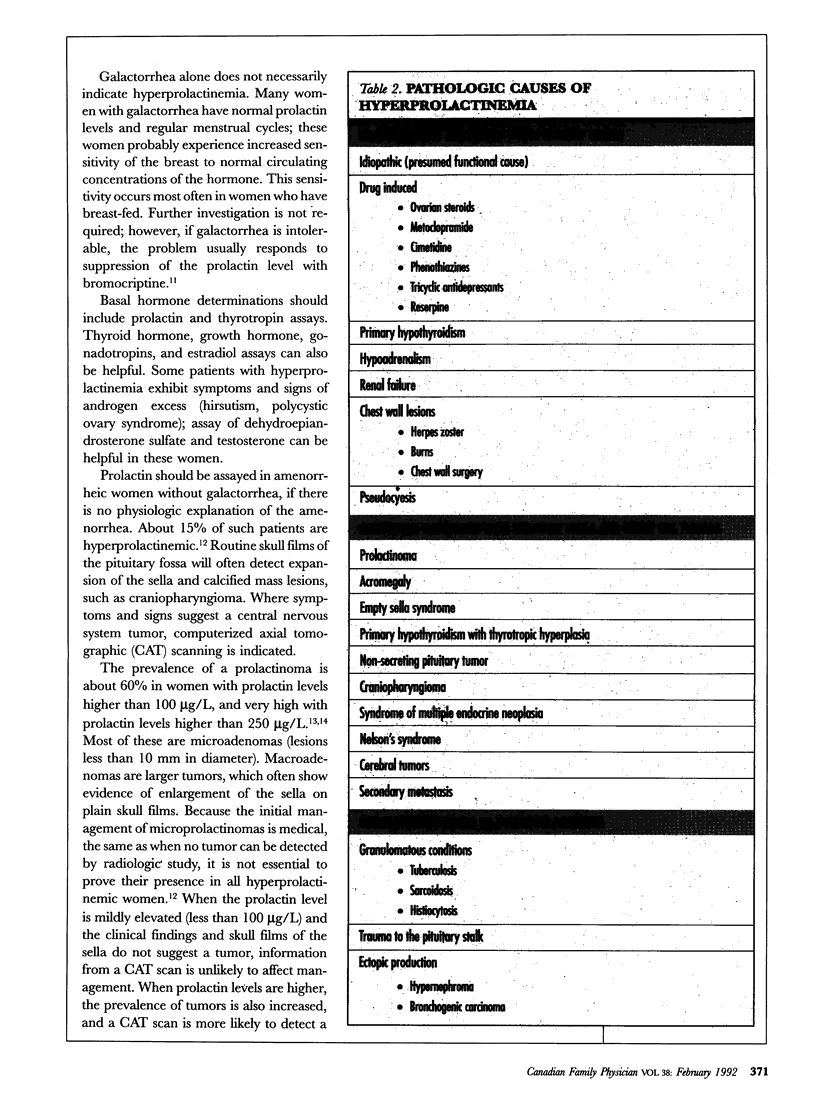

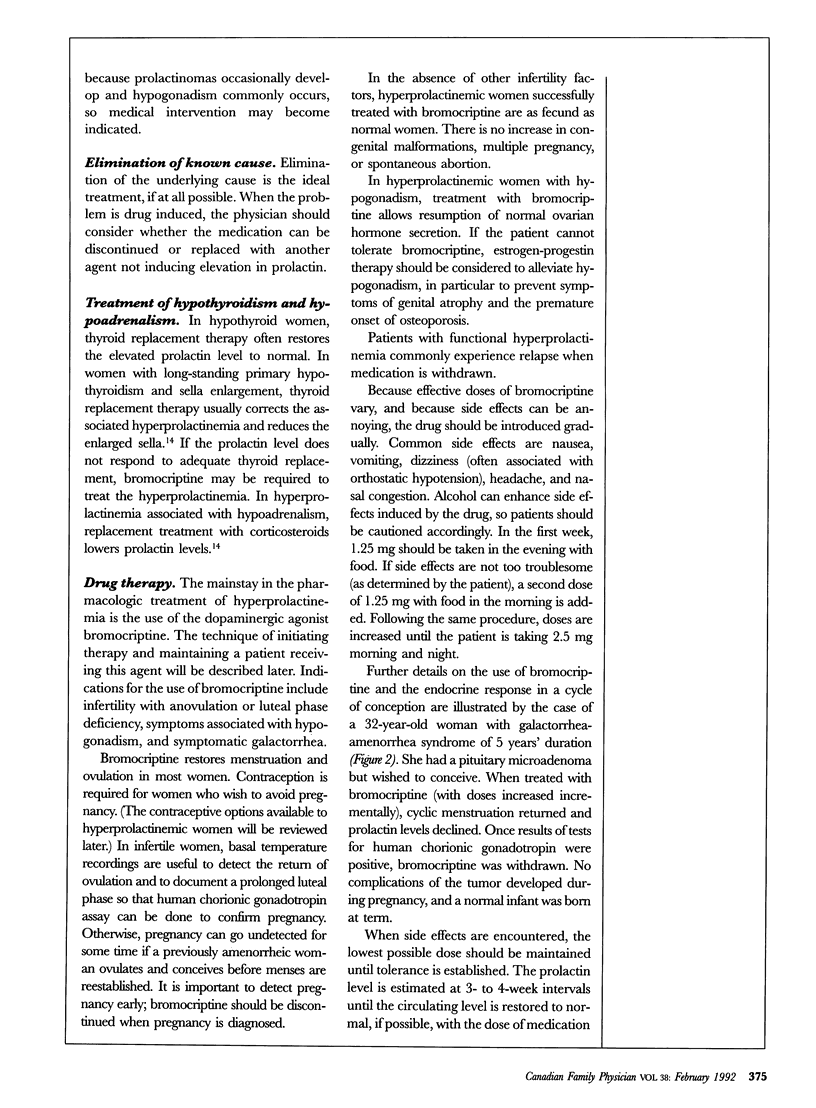
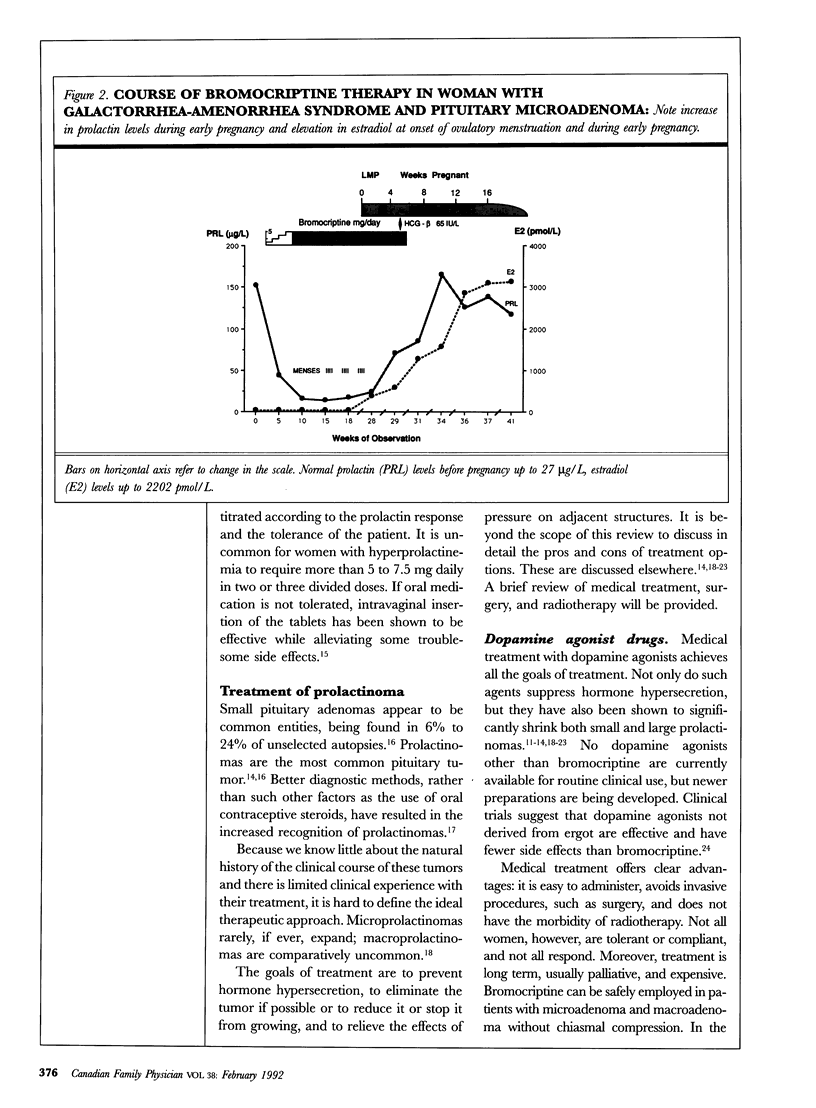
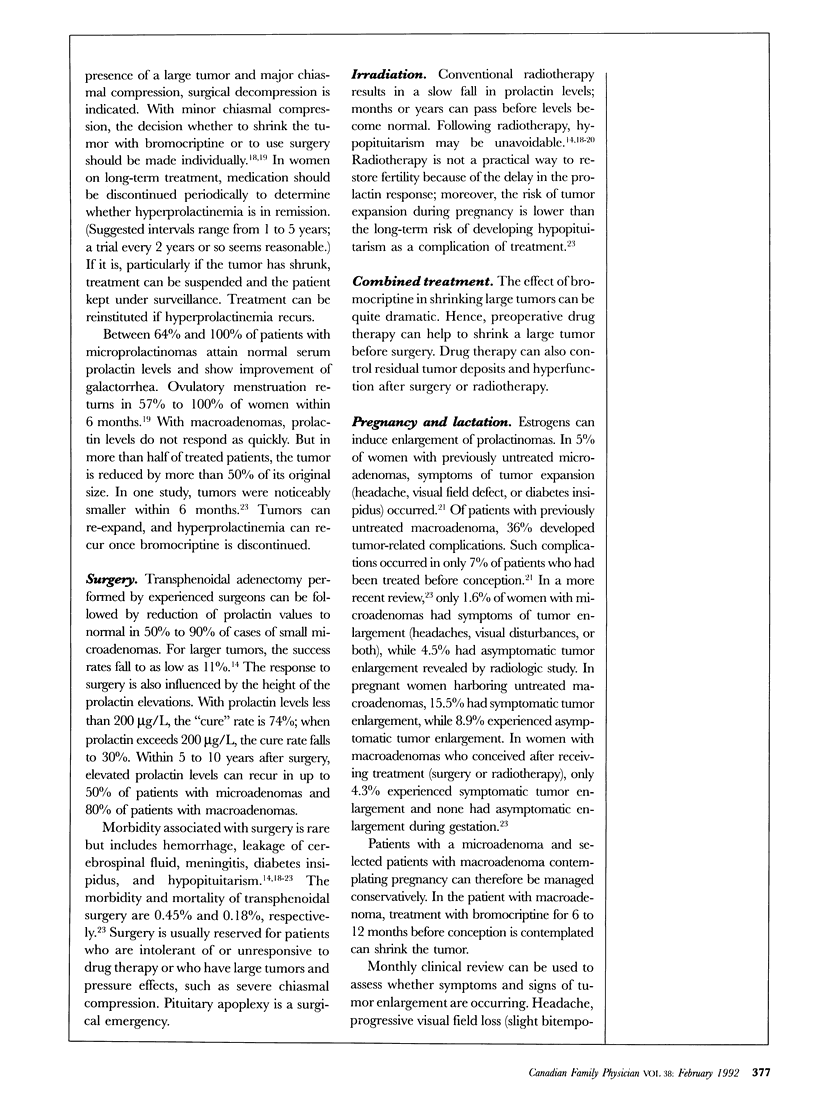

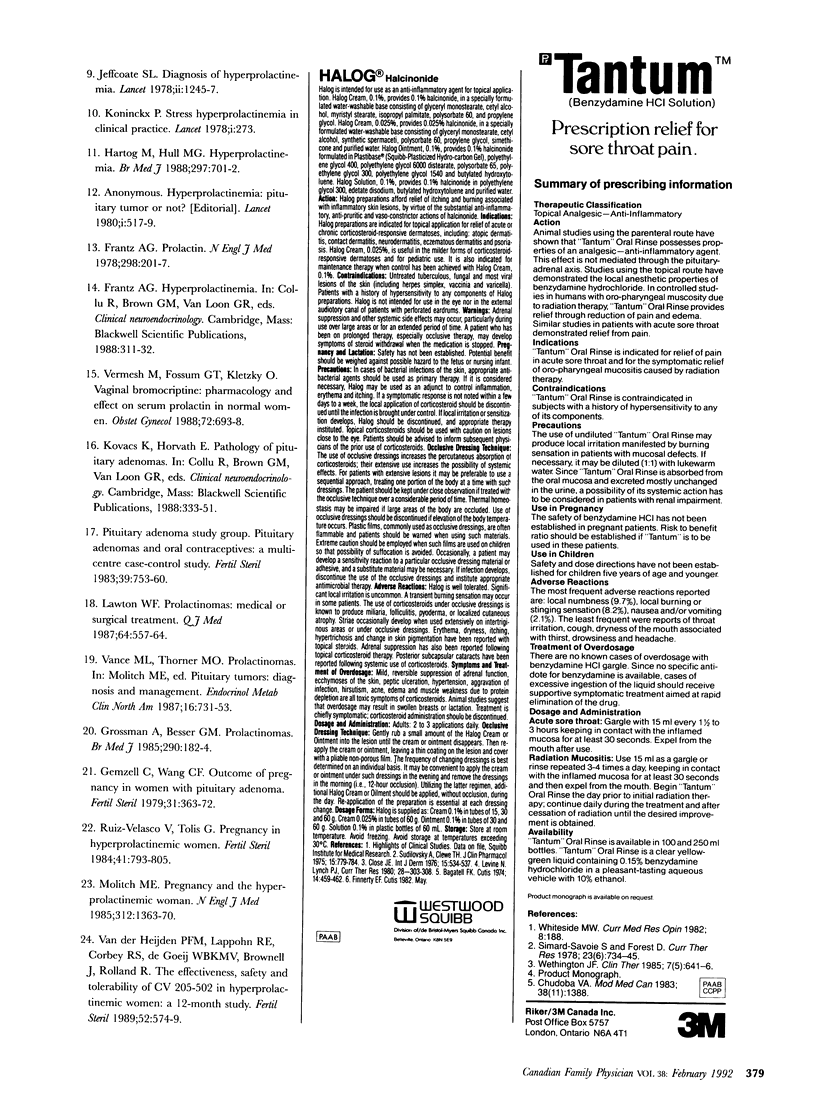
Selected References
These references are in PubMed. This may not be the complete list of references from this article.
- Frantz A. G. Prolactin. N Engl J Med. 1978 Jan 26;298(4):201–207. doi: 10.1056/NEJM197801262980408. [DOI] [PubMed] [Google Scholar]
- Gemzell C., Wang C. F. Outcome of pregnancy in women with pituitary adenoma. Fertil Steril. 1979 Apr;31(4):363–372. doi: 10.1016/s0015-0282(16)43929-4. [DOI] [PubMed] [Google Scholar]
- Grossman A., Besser G. M. Prolactinomas. Br Med J (Clin Res Ed) 1985 Jan 19;290(6463):182–184. doi: 10.1136/bmj.290.6463.182. [DOI] [PMC free article] [PubMed] [Google Scholar]
- Hartog M., Hull M. G. Hyperprolactinaemia. BMJ. 1988 Sep 17;297(6650):701–702. doi: 10.1136/bmj.297.6650.701. [DOI] [PMC free article] [PubMed] [Google Scholar]
- Ho Yuen B., Phillips W. D., Cannon W., Sy L., Redford D., Burch P. Prolactin, estradiol, and thyroid hormones in umbilical cord blood of neonates with and without hyaline membrane disease: a study of 405 neonates from midpregnancy to term. Am J Obstet Gynecol. 1982 Mar 15;142(6 Pt 1):698–703. doi: 10.1016/s0002-9378(16)32443-7. [DOI] [PubMed] [Google Scholar]
- Hwang P., Guyda H., Friesen H. Purification of human prolactin. J Biol Chem. 1972 Apr 10;247(7):1955–1958. [PubMed] [Google Scholar]
- Jeffcoate S. L. Diagnosis of hyperprolactinaemia. Lancet. 1978 Dec 9;2(8102):1245–1247. doi: 10.1016/s0140-6736(78)92112-8. [DOI] [PubMed] [Google Scholar]
- Koninckx P. Stress hyperprolactinaemia in clinical practice. Lancet. 1978 Feb 4;1(8058):273–273. doi: 10.1016/s0140-6736(78)90516-0. [DOI] [PubMed] [Google Scholar]
- Larrea F., Escorza A., Valero A., Hernandez L., Cravioto M. C., Diaz-Sanchez V. Heterogeneity of serum prolactin throughout the menstrual cycle and pregnancy in hyperprolactinemic women with normal ovarian function. J Clin Endocrinol Metab. 1989 May;68(5):982–987. doi: 10.1210/jcem-68-5-982. [DOI] [PubMed] [Google Scholar]
- Lawton N. F. Prolactinomas: medical or surgical treatment? Q J Med. 1987 Jul;64(243):557–564. [PubMed] [Google Scholar]
- McNatty K. P., Sawers R. S., McNeilly A. S. A possible role for prolactin in control of steroid secretion by the human Graafian follicle. Nature. 1974 Aug 23;250(5468):653–655. doi: 10.1038/250653a0. [DOI] [PubMed] [Google Scholar]
- Ruiz-Velasco V., Tolis G. Pregnancy in hyperprolactinemic women. Fertil Steril. 1984 Jun;41(6):793–805. doi: 10.1016/s0015-0282(16)47888-x. [DOI] [PubMed] [Google Scholar]
- Vance M. L., Thorner M. O. Prolactinomas. Endocrinol Metab Clin North Am. 1987 Sep;16(3):731–753. [PubMed] [Google Scholar]
- Vermesh M., Fossum G. T., Kletzky O. A. Vaginal bromocriptine: pharmacology and effect on serum prolactin in normal women. Obstet Gynecol. 1988 Nov;72(5):693–698. [PubMed] [Google Scholar]
- Whitworth N. S. Lactation in humans. Psychoneuroendocrinology. 1988;13(1-2):171–188. doi: 10.1016/0306-4530(88)90013-3. [DOI] [PubMed] [Google Scholar]
- van der Heijden P. F., Lappöhn R. E., Corbey R. S., de Goeij W. B., Brownell J., Rolland R. The effectiveness, safety, and tolerability of CV 205-502 in hyperprolactinemic women: a 12-month study. Fertil Steril. 1989 Oct;52(4):574–579. doi: 10.1016/s0015-0282(16)60966-4. [DOI] [PubMed] [Google Scholar]


